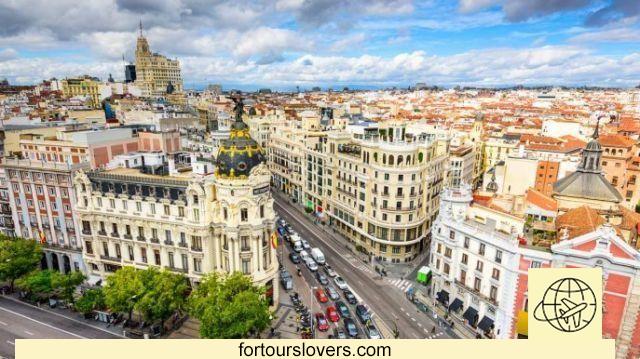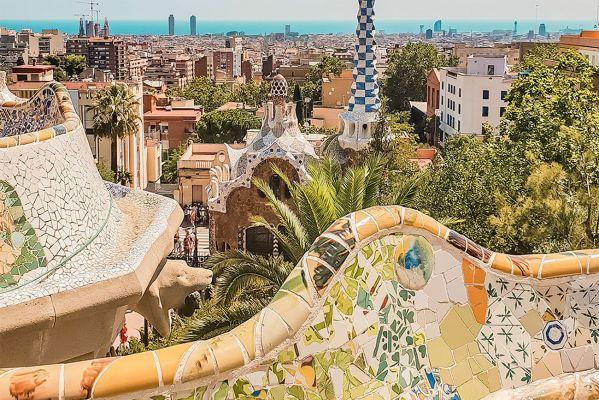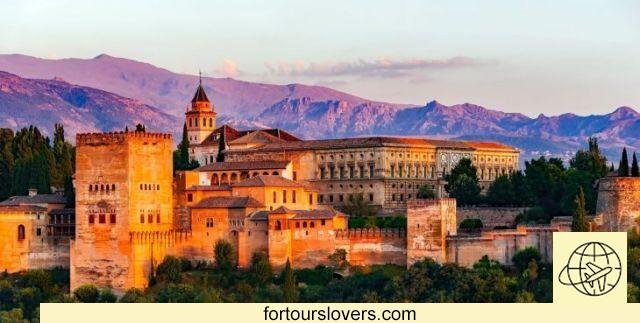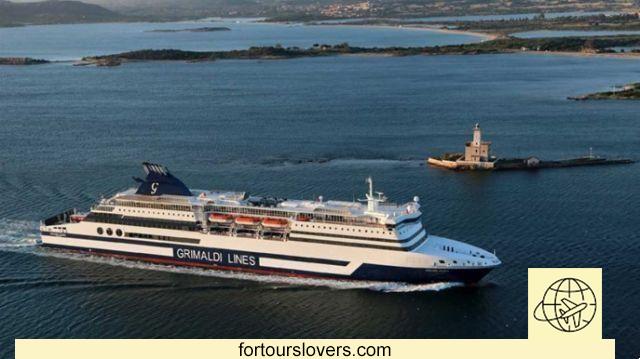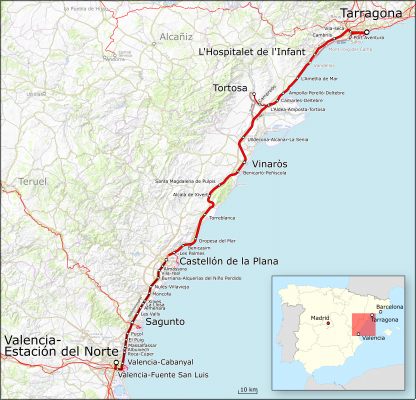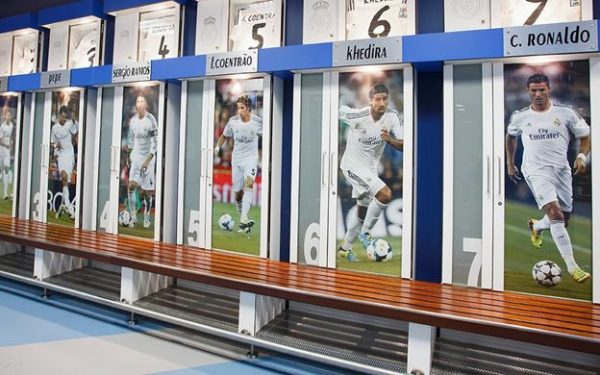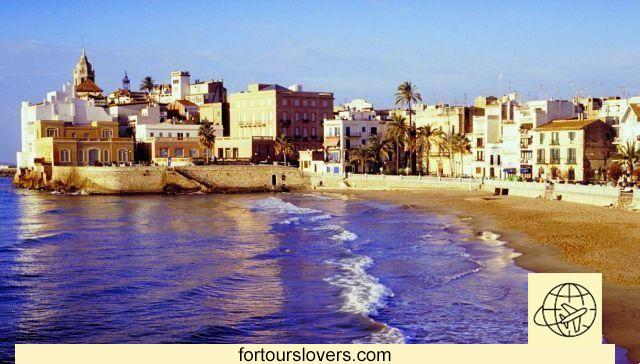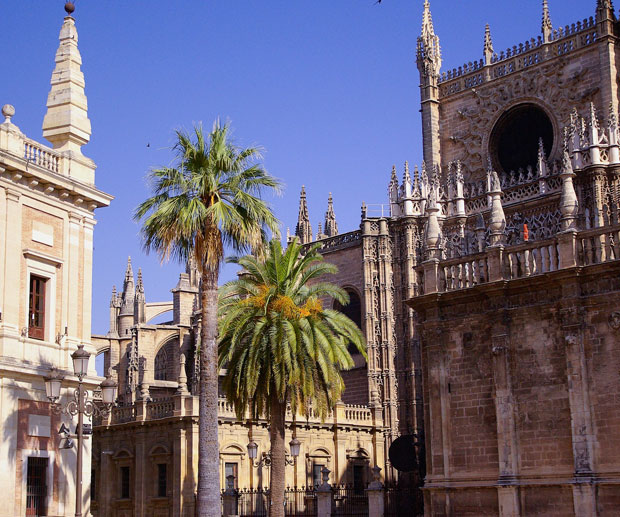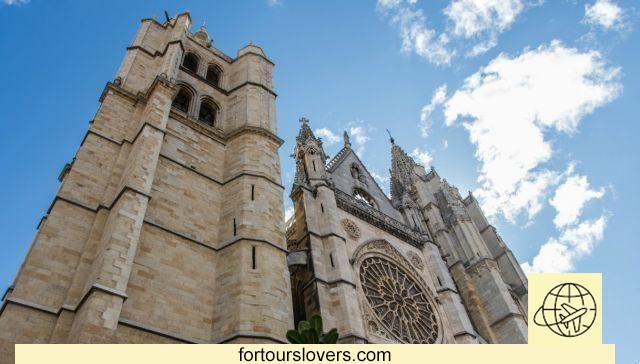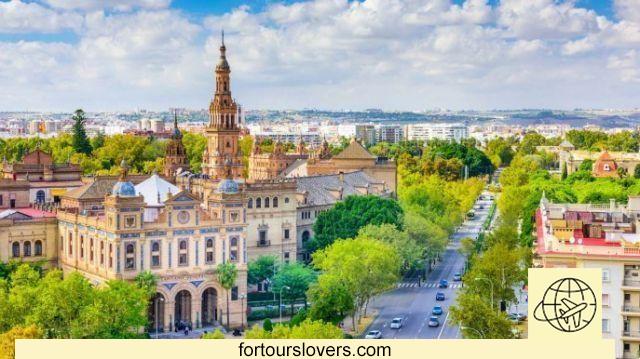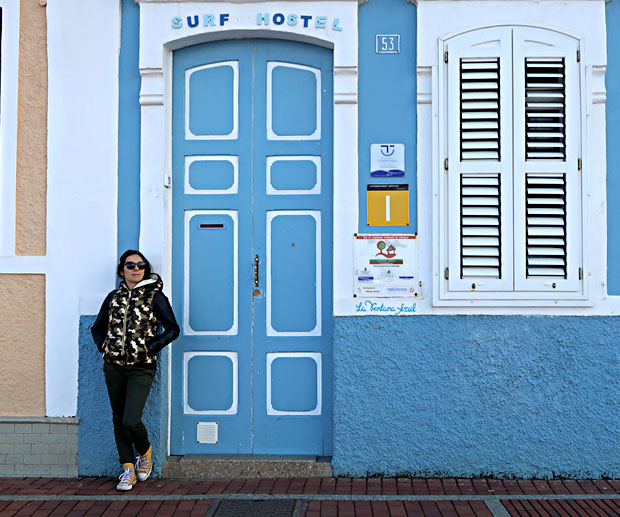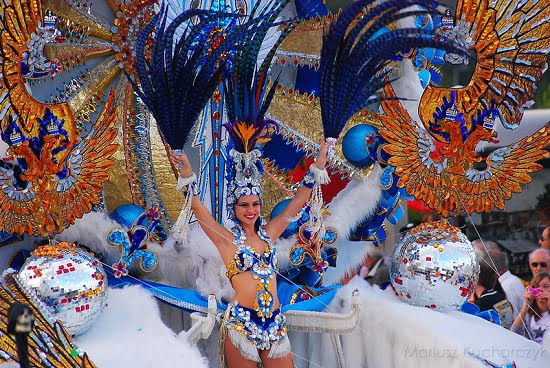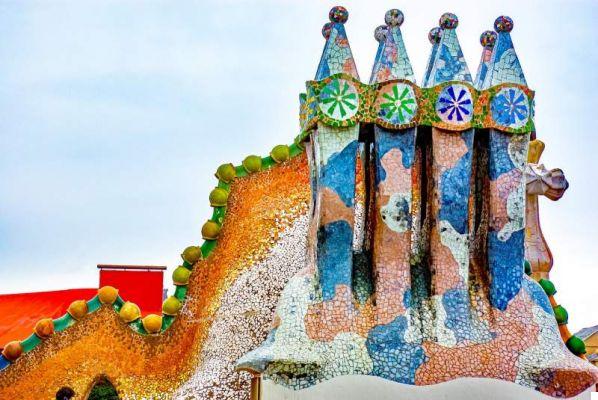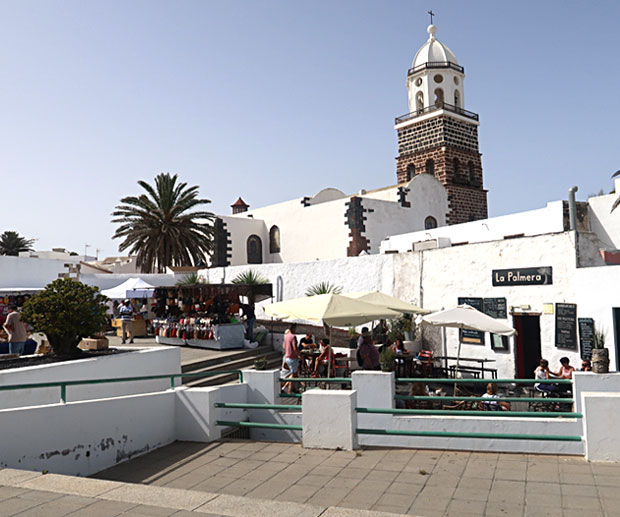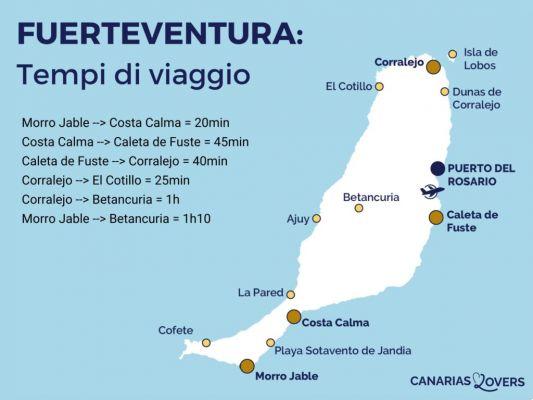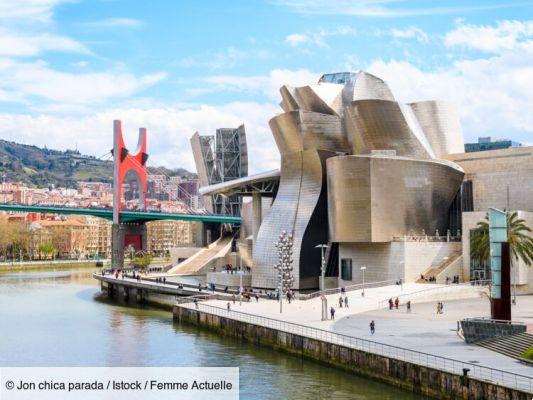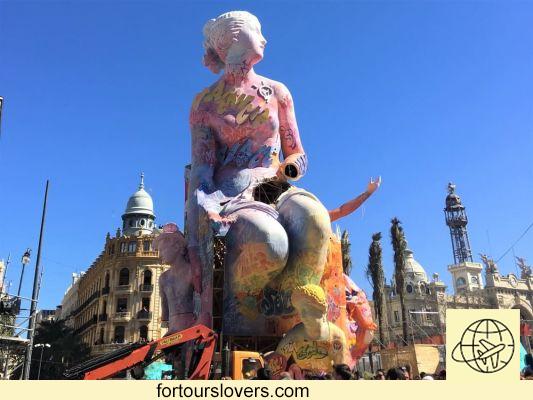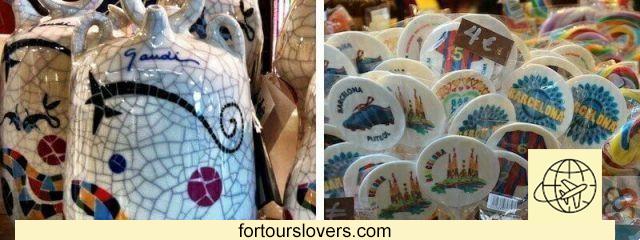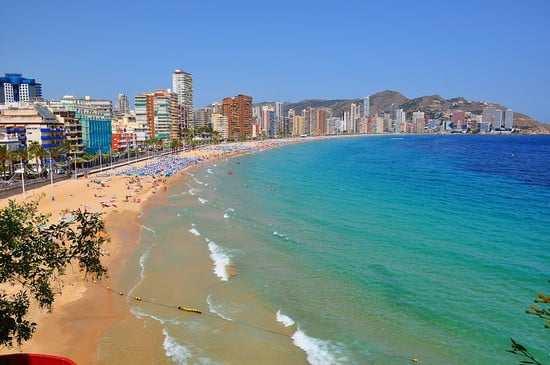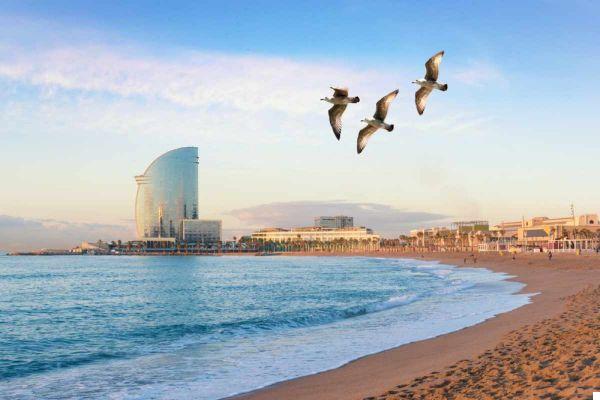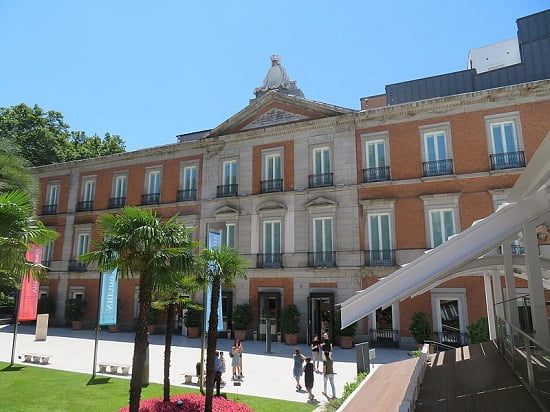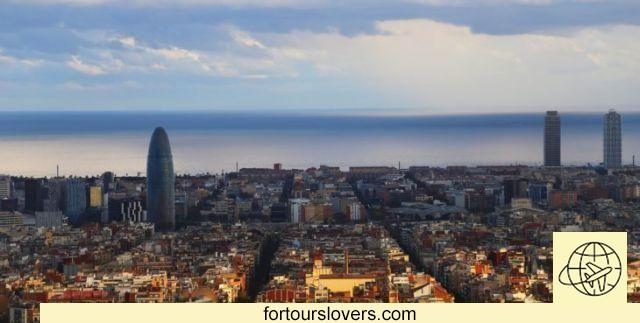
Barcelona
11 things to do and see in Barcelona and 3 not to doAncient and modern; local and global; cultured and popular; elite and touristic: Barcelona is a city that lives on fertile contradictions. Antinomies that have the same course of a karst river: for years they run under the track except, then, to emerge in an impetuous (though not entirely unexpected) way. An example above all: the diplomatic tensions with Madrid following the declaration of independence of the Catalan separatists. In short, Barcelona is crossed by opposing social forces but, on the other hand, this only increases its charm, at least for those on vacation who are not satisfied with superficially visiting places, but want to capture their genius loci. It is with this spirit that, below, we will try to tell the main city attractions. Happy reading.
1 Sagrada Familia
There are several ways of declining identity. There is a closed way that rejects cultural diversity and, on the contrary, there is an open one that discovers its originality by making different values interact with each other. The Sagrada Familia is the artistic and architectural representation of this second approach. In fact, the Modernism by Antoni Gaudì (1852-1926), main architect of this monumental temple, was born from synthesis of Gothic, Islamic and Renaissance. Not surprisingly, among the reasons with which theUNESCO international convention against doping in the sport, in 2005, placed the Facade of the Nativity and Crypt there is just theinterchange between different artistic and cultural currents. That of the Nativity is one of the 3 facades of the Sagrada Familia. The other two are there Facade of the Passion and Facade of the Glory. In Gaudì's project, each of these facades must be surmounted by 4 towers for a total of 12, as many as there are apostles. Another 4 towers, on the other hand, symbolize the evangelists Matthew, Mark, Luke and John, while the last 2 are in honor of the Madonna and Jesus (the latter is intended to be the tallest of all). A few hints, however, sufficient to understand the majesty of a work that, in fact, is still far from being completed. And yes, because one of the peculiarities of the Sagrada Familia lies precisely in its incompleteness. The construction of the church, which began in 1866 (Gaudì took over the direction of the works in 1883), it should end around 2030. As for the interior, in addition to the aforementioned crypt (where Gaudì is buried), thedecorative exuberance of the colonnade and stained glass windows. A baroque composition in which the obsessive attention to detail that has always distinguished the Gaudian work stands out. Obviously, several other architects took turns in the construction of the building. Each was given an irrepressible margin of creative autonomy with the only requirement of continuity with the drafts left by Gaudì. Finally some advice. Given the huge turnout, it is preferable to buy the ticket online (www.sagradafamilia.org - the English version is available), while for the visit it is advisable to include the ascent by lift to the tower of the Facade of the Nativity or, alternatively , in that of the Passion Facade.
2 Park Güell
Those who want to deepen the artistic and cultural legacy of Antoni Gaudì must not limit themselves to the Sagrada Familia. In fact, there are many traces that this visionary architect has left around Barcelona. Among the many things to see (Casa Milà, Casa Battló), a place of honor belongs to the wonderful Parc Güell. We are less than 3 kilometers from the Sagrada Familia and therefore the visit of the two points of interest can very well take place in sequence. Parc Güell, UNESCO World Heritage Site since 1984, was not born as a city public park. On the contrary, the initial idea of the entrepreneur Eusebi Güell was to transform this vast hilly area with a privileged view of the sea and the center of Barcelona into a residential complex for the rich. So this was the mandate given to Antoni Gaudì, who poured into the work all the disruptive creativity he had at his disposal mix of tradition and modernity, identity and cosmopolitanism which is the true figure of Catalan Modernism. Here lies the biggest difference compared to the different declinations of the early 900th century art noveaux. In the case of Barcelona and Catalonia, the eruption of this artistic current went well beyond the spirit of aesthetic renewal with which it established itself in France, Belgium and Italy. Returning to the park, it was soon realized that the construction of a residential complex was more difficult than expected. The difficult orography of the place together with other problems of a bureaucratic nature linked to pre-existing long lease contracts, eventually persuaded the protagonists to desist from the initial project. In the meantime, however, much had been achieved: the Entrance staircase and Hipostila room (86 Doric columns, a clear reference to ancient Greece); the Banc de Trencadis, tiled and curved perimeter bench in which all the decorative themes typical of Catalan Modernism recur; finally, the two houses in which the client and performer of the work lived the last years of his life. Yes, because Güell and above all Gaudì spent the last part of their existence in the park. Gaudì's accommodation was later transformed into House-Museum with the objects, furnishings and furniture made by the multifaceted Catalan artist.
For the orari di apertura of Parc Güell see the table.
| Months | Working Time |
| 01 Gen 24 Mar * |
08:30 18.30 |
| 25 Mar 29Apr |
08:00 20:30 |
| 30Apr 26 Aug |
08:00 21:30 |
| 27 Aug 27 Ott |
08:00 21:30 |
| 28 Ott 31 December |
08.00 20.30 |
*From February 17th to March 24th closing at 19pm
More information on Official site: www.parkguell.cat (English version available).
3 La Rambla
Once in Barcelona it is impossible not to take a walk along the Rambla. The trouble, however, is that tourists often end up spending a good part of their holiday going up and down this avenue which contains the best and worst of the city. Let's start with the positives: La Rambla's charm derives from its cosmopolitan and extravagant character. Street artists, street vendors, florists and more generally a humanity so varied in origin, tastes and social background that even the most seasoned traveler will not be indifferent. As reiterated at the beginning, however, Barcelona is also a city deeply attached to its symbols. One of these is a wrought iron fountain, the Canaletes Fountain. It is found shortly after Placa de Catalunya and it is said that whoever drinks the water will eventually go back to the city. Also worth seeingEsglesia de Betlem, church of the '700 with a wonderful Baroque facade. The interior, however, was devastated by a fire that broke out during the civil war of 1936 and despite the subsequent renovation it has never matched the decorative exuberance of the exterior. The flower market (Rambla de les Flors) And the Market de la Boqueria (see point 6) are two other stops to be made along the way. The Palau de la Virreina and Gran Teatru del Liceu. The first is a beautiful Rococo building which houses various photographic exhibitions; the second, instead, is the Barcelona Opera House (www.liceubarcelona.cat - English version available). Another thing to see, right in front of the Teatru del Liceu, is the circular ceramic mosaic made by the Catalan artist Joan Miró (see point 10). Having said the pros, let's come to the cons. La Rambla, in many ways, is a victim of its own popularity which caused a general downward trend in the services offered. In short, it is a commodified area where, with a few exceptions, it is better not to stop to eat or shop. The other contraindication is the possibility of running into some pickpocket able to extricate himself from the crowd.
4 Gothic Quarter
At the beginning we referred to the genius loci of Barcelona. Well, the Gothic Quarter is undoubtedly the district where thesoul of the city. First of all from an urban point of view, since over the centuries theRoman imprint with the traditional division of the area into decumani. A particular, the latter, which also characterizes the old part of the city of Naples. However, it is not only the urban layout that gives the places historicity. In the Barrio Gotico, in fact, there are the palaces of Catalan power. Buildings that the recent news (the reference is to the diplomatic crisis with Madrid that broke out in 2017) has made famous all over the world. Palace of the Generalitat (seat of regional power), and theAjuntament (the town hall) have suddenly become even more famous than they already were. Religious buildings also bear witness to Catalan diversity. L'Esglesia de Sant Just I Pastor, for example, it is famous because Antoni Gaudì, the architect of the Sagrada Familia, was arrested nearby in 1924. The reason for the arrest was the refusal to speak Spanish in front of a policeman. The other religious building is the Cathedral, which we will discuss more fully in the next point. Meanwhile, near this church, to be precise in Plaça Nova, on Saturdays and Sundays it is possible to attend a show by Sardana, traditional Catalan dance and another powerful symbol of city identity.
5 Barcelona Cathedral
La Catedral de Santa Creu i Santa Eulalia it is the most important place of worship in Barcelona and one of the greatest examples of Gothic-Catalan architecture. The martyrdom of Santa Eulalia, which occurred at the time of the persecutions of Diocletian, given the presence of Christians in the city between the end of the third and the beginning of the fourth century AD. C.. To confirm this hypothesis, the remains of an ancient early Christian basilica come to light during recent archaeological excavations on the eastern perimeter of the church. This primitive basilica remained standing until 1046, when it was seriously damaged by the Arab troops following the commander Almanzor. A few years later a second cathedral was consecrated on which, in 1298, thecurrent place of worship. Obviously the works lasted for over a century, ending around 1460. Una second tranche of works it took place in early nineteenth century. The making of the main facade, richly decorated, dates back to 1890, while the ciborium it was even finished in 1913. The interior, a 3 naves, accommodates well 29 side chapels. In one of these there is an ancient crucifix that, according to legend, played a role in the victorious battle of Lepanto in 1571. Also worth seeing is the choir crypt (with the remains of Santa Eulalia) and the medieval cloister with trees, fountains and 13 geese to symbolize the age of the "holy child". Through liftyou can also visit the roof and Bell tower building.
For the visiting hours of the Catedral de Santa Creu i Santa Eulalia see table.
| Days | Working Time |
| Mon-Fri * | 08nd FIUMANKA 17nd FIUMANKA |
| Sat ** | 08nd FIUMANKA 17nd FIUMANKA |
| Dom *** | 08nd FIUMANKA 17nd FIUMANKA |
| Mon-Sat (Lift) | 10nd FIUMANKA |
* Cultural and tourist visits (with donation): 13:00 - 19:45
** Cultural and tourist visits (with donation): 12:00 - 17:30
*** Cultural and tourist visits (with donation): 14:00 - 17:30
For more information on the history of the building consult the Official site: www.catedralbcn.org (English version available).
6 La Boqueria market
Among the points of interest in Barcelona, a prominent place certainly belongs to Mercat de la boqueria. Completed in 1914, this market attracts a daily huge number of visitors between tourists and residents. Its history dates back to the XNUMXth century when farmers and breeders came to the city to sell their products including goat meat (boc) which, in all probability, gives the market its name. However the official name is Market of Sant Josep in deference to the Carmelite convent which for over two centuries - from 1593 to 1835 - carried out its functions in place of the current market area. A fire destroyed the place of worship and so starting from the following year (1836) thearchitect Josep Mas i Vila arranged to transform the site into a market-place. Square which, as mentioned at the beginning, in 1914 was covered with an iron frame and colored glass. A modernist building in continuity with the architectural style of Barcelona which, at the beginning of the millennium, was further modernized with an info-point and didactic room for courses, workshops and events related to gastronomy. Finally two tips: the first is to visit the market early in the morning, avoiding the crowds of the following hours; the second, on the other hand, is to reserve a few more minutes of attention for buying and selling the fish. The fish department of la Boqueria it is the heart of Barcelona's market tradition. For more information: www.boqueria.info (English version available).
7 Basilica de Santa Maria del Mar
The traces attesting to the Christian presence in Barcelona date back at least to the third century AD At that time a small community of believers settled near the sea, in the district now known as the topos de "La Ribera". Just the proximity to the sea allowed the development of numerous commercial and artisan activities. Economic growth, in turn, favored the population of the area, making the construction of a larger church impossible to defer at a certain point. The building was built on a pre-existing chapel dedicated to the Virgin Mary and they were necessary only 55 years (1329-1384) for its completion. The merit of such diligence is to be ascribed to the commitment of fishermen, sailors and artisans of the area who, having obtained the permission to use the royal quarry of Montjuic, took on the task of transporting the stones necessary for the construction of the church. Church that, according to most, represents the most shining example of Gothic-Catalan, with a majestic central nave divided by the two sides by a group of columns in turn surmounted by intertwined arches. Also very beautiful stained glass windows, especially that of rose window over the main portal. In short, the Basilica de Santa Maria del Mar is another unmissable stop on a trip to Barcelona. What makes it profoundly different from both the Sagrada Familia and the Cathedral is its greater sobriety. An effect only partially intended, on the other hand, instead, the result of a disastrous circumstance: an anarchist fire that broke out during the Spanish civil war of 1936.
For the orari di apertura see the table.
| Days | Timetable Morning | Hours Afternoon |
| Mon-Sat | 09:00 13:00 |
17:00 20:30 |
| Sun | 10:00 14:00 |
17:00 20:00 |
For more information on history, mass times, liturgical activities and visiting methods, consult the place: www.santamariadelmarbarcelona.org (English version available).
8 Picasso Museum
The Picasso Museum is located in the district of La Ribera, one of the most evocative corners of historic center of Barcelona. Set up in 5 contiguous buildings, houses over 4000 works by the artist who spent the years of his youth in the city. The first three - Palau Aguilar, Palau del Baro de Castellet and Palau Meca - welcome the permanent works of the painter from Malaga; the other two, however, - Casa Mauri and Palau Finestress - are used for temporary exhibitions. The Cubist period was absent from the collection, the artistic phase that guaranteed Picasso worldwide success and fame. On the contrary, all the youthful artistic production is well represented here up to the so-called Blue Period. There is also one in the museum forty ceramic works confirming the versatility of the artist who, although he established himself above all through painting, has always loved various on several fronts.
For the opening hours of the Picasso Museum see the table.
| Days | Working Time |
| Mon | closed |
| Tue-Wed | 09:00 19:00 |
| Thu | 09:00 21:30 |
| Sat-Sun | 09:00 19:00 |
For more information visit the Official site: www.museupicasso.bcn.cat (English version available).
9 Barceloneta
One of the secrets behind Barcelona's success is the survival of characteristic angles where time seems to have stopped. Obviously this is not the case, only that technological and social changes impact differently depending on the area. One of the districts in which this discrepancy is most evident is Barceloneta, a historic settlement of fishermen and today the main summer meeting place for tourists and residents. Until 1992 Barceloneta was a popular neighborhood, on the margins of the city's economic and social development. With the Olympics, however, there was a revaluation of the area which, while not losing its own Mediterranean soul, has become one of the coolest places in the city. In addition to gastronomy (this is where the best seafood restaurants in Barcelona are) and at beachThe Museu d'Historia de Catalunya and the Aquarium, one of the largest in Europe, also led to the rebirth of this area. The latter, in particular, is very suitable for those who travel with children in tow. Not to be missed!
Opening hours Museo d'Hystoria de Catalunya
| Days | Working Time |
| Mon | closed |
| Mar | 10:00 19:00 |
| More | 10:00 20:00 |
| Thu-Fri-Sat | 10:00 19:00 |
| DomFes | 10:00 14:30 |
10 Mirò Foundation
La Fundació Joan Miró is another unmissable stop on a trip to Barcelona. To want its construction, on the Montjuic hill, was the same artist. A non-trivial choice given the international dimension acquired over the years, but on the other hand absolutely in line with the mix of local and global that has always defined the Catalan identity. Miró, who was born in Barcelona, after a very long artistic wanderings around the world (Paris, New York, Japan and his beloved Mallorca) decided, at a certain point, to donate to the city the vast majority of his works (ca . 11.000, for the most part drawings) confirming in this way, despite the prolonged absence, the visceral relationship with the homeland. The task of constructing the building was entrusted to his friend Josep Lluis Sert, the architect who also oversaw the construction of the Majorcan studio. In addition to the works already mentioned, the foundation houses other paintings, sculptures and works on paper by Miró from private collections. In short, a complete overview of Miró's production with the possibility of deepening his various pictorial cycles: from the Spanish civil war, experienced as an exile, to the surrealist production that brought so much fame to man. It is not over, because the Miró Foundation, since its inception, in 1975, has also hosted temporary exhibitions of emerging artists, with the perfectly successful goal of transforming the building into a international center for contemporary art.
For the orari di apertura of the museum see the table.
| Days | Working Time |
| Mon | closed |
| Tue-Wed * | 10:00 18:00 |
| Thu | 10:00 21:00 |
| Fri ** | 10:00 18:00 |
| Sat | 10:00 20:00 |
| Sun | 10:00 15:00 |
* From Apr to Oct 10:00 - 20:00
** From Apr to Oct 10:00 - 20:00
For more information consult the Official site: www.fmirobcn.org (English version available).
11 Camp Nou
The famous motto "El Barça es mes que un club" (“Barcelona is more than a club”) explains by itself why the visit of the Camp Nou, the stadium of the Catalan team, is an experience that goes beyond the sporting aspect. Of course, watching a Blaugrana game is not a bad idea at all; but deepening, at least a little, the identity and historical-political implications for many is even more interesting than the game itself. Not surprisingly, the lawyer coined the motto Narcís de Carreras i Guiteras, president of the club at the end of the 60s of the last century and always close to the Catalan independence movements. Obviously on the official club website (www.fcbarcelona.com) you can buy tickets for a match or those for the visit to the museum plus the tour of the stadium. To do!
1 Beware of pickpockets
As in all the big cities of the world too pickpocketing is a problem in Barcelona. To avoid nasty surprises it is better avoid running around with a lot of cash behind; leave your bag unattended at a bar or on the beach; keep the wallet in the back pocket of your pants or wear watches, chains, bracelets of great value. In short, the precautions they are the same everywhere. In the case of Barcelona we can add another one: avoid going up and down La Rambla, especially on weekends. Pickpockets, in fact, are at ease in the crowd which greatly facilitates the task, and therefore the probability of running into some bad guy on weekends is higher.
2 Pay attention to the evening hours
Nightlife begins a few hours later than in the rest of Europe, so woe to not take it into account: an outing to the bar or to dinner is unthinkable before 22:00 (also 22:30). For the disco, however, you have to wait at least one in the morning. Conversely, you run the risk of being face to face with the DJ, the attendants and the security of the club. Warn!
3 Don't answer "gracias"
Of course, visitors to Barcelona do not need to know Catalan or even Castilian (the official language of Spain). What he needs to know, however, is that speaking in Spanish to a Catalan could be irritating. “Gracias” and “adios” are the most common examples (“mercì” and “adeu” should be used in their place), but there are many others.




